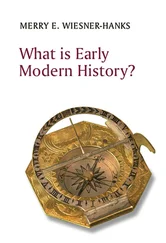R. Nisbet Bain - The Cambridge Modern History
Здесь есть возможность читать онлайн «R. Nisbet Bain - The Cambridge Modern History» — ознакомительный отрывок электронной книги совершенно бесплатно, а после прочтения отрывка купить полную версию. В некоторых случаях можно слушать аудио, скачать через торрент в формате fb2 и присутствует краткое содержание. Жанр: unrecognised, на английском языке. Описание произведения, (предисловие) а так же отзывы посетителей доступны на портале библиотеки ЛибКат.
- Название:The Cambridge Modern History
- Автор:
- Жанр:
- Год:неизвестен
- ISBN:нет данных
- Рейтинг книги:4 / 5. Голосов: 1
-
Избранное:Добавить в избранное
- Отзывы:
-
Ваша оценка:
- 80
- 1
- 2
- 3
- 4
- 5
The Cambridge Modern History: краткое содержание, описание и аннотация
Предлагаем к чтению аннотацию, описание, краткое содержание или предисловие (зависит от того, что написал сам автор книги «The Cambridge Modern History»). Если вы не нашли необходимую информацию о книге — напишите в комментариях, мы постараемся отыскать её.
The first series was planned by Lord Acton and edited by him with Stanley Leathes, Adolphus Ward and George Prothero.
The Cambridge Modern History Collection features all five original volumes:
Volume I: The Renaissance
Volume II: The Reformation, the End of the Middle Ages
Volume III The Wars of Religion
Volume IV: The 30 Years' War
Volume V: The Age of Louis XIV
The Cambridge Modern History — читать онлайн ознакомительный отрывок
Ниже представлен текст книги, разбитый по страницам. Система сохранения места последней прочитанной страницы, позволяет с удобством читать онлайн бесплатно книгу «The Cambridge Modern History», без необходимости каждый раз заново искать на чём Вы остановились. Поставьте закладку, и сможете в любой момент перейти на страницу, на которой закончили чтение.
Интервал:
Закладка:
The residuum of old-fashioned simplicity in Florence favoured his desire to simplify not only private, but religious life. The fifteenth century was everywhere marked by magnificence in ecclesiastical externals, in vestments and jewels, in banner, pyx and crucifix, in chapels built or restored by private families, with portraits frescoed and arms embossed upon their walls. Church music had been elaborated; the organist had become a personage, and might aspire to be a knight; weary men repaired to the Cathedral, not to worship, but to be soothed by the music of Orcagna, the greatest executant of his day. Against these jewels and broad phylacteries, against the monuments of family pride, against the substitution of sound for praise, Savonarola repeatedly inveighed. One of his few humorous passages describes the solo-singer with a voice like a calf, while the choir howled round him like little dogs, none understanding what they meant. His readers can still picture the abuses of society at church, the rows of gallants lining the nave, the ladies in their lowest and longest gowns filing between them, lending ear to unseemly jests and doubtful compliments. Savonarola would have none of this; in church or in street processions he kept the sexes separate.
After Lorenzo’s death Savonarola’s sermons became more outspoken. They were not as yet political, but two constant features might easily assume a political complexion-the one the invectives against the Church, the other the prophecy of immediate doom. The two were in close connexion. Not only the Neapolitan exiles but Alexander VTs enemy, the Cardinal della Rovere, had taken refuge in France; the French invasion therefore was aimed not only at the King of Naples, but also at the Pope, whose simoniacal election and scandalous life added fuel to the fire of Savonarola’s diatribe. For Charles VIII Naples should be the stepping-stone to the recovery of Jerusalem. So too Savonarola had fondly dreamed that the reform of the Tuscan Congregation should be the pathway to the possession of the Holy Sepulchre. The objects of the French invader and the Dominican reformer seemed identical, their enemies the same.
Within Florence, too, the threatened invasion might well give a political bearing to Savonarola’s utterances. Piero, deserting the traditions of his house, had abandoned the Milanese alliance, the keystone of its policy; he had flouted the friendship of France, the Guelfic ally of centuries; under Orsini influence he had flung himself into the arms of the King of Naples. The great Medicean families resented this light-of-love diplomacy, and clung to the Milanese alliance. The populace hated the Neapolitan dynasty, after having endured its cruelty as an enemy, and its insolence as a friend. The whole town disliked and feared the armed opposition to the formidable hosts of France. What then was more natural than that Florence should turn to Savonarola for his guidance? Here was the very terror from the north which he had predicted; the sword that should strike the earth, and that quickly; the chastisement that should purge Italy of sin and then renew the world! Who could so well conjure the phantom as he by whom it had been raised?
The French had now crossed the Apennines and were besieging the strong Florentine fortress of Sarzana. Before Piero set out on his fateful journey to the French King, discontent found expression in the very Seventy, the stronghold of Medicean power. Diplomacy had been the palladium of the Medici. Lorenzo knew this, when he made his perilous voyage to cajole the King of Naples. Piero knew it when, in conscious imitation, he slipped away to meet the King of France before Sarzana. He wrote himself, that he was being dragged to sacrifice. Lorenzo’s success had saved the dynasty, and Piero’s failure lost it. A crushing defeat could have sacrificed no more. With the fortresses of Sarzana, Pietra Santa, Pisa and Leghorn in French hands, Florence herself lay at the mercy of Charles. High and low scorned this base surrender by one who had no commission from the State. Piero’s cowardice gave courage to his opponents. Hitherto they had stammered and stuttered in criticising his proposals. Now, in his absence, they sent envoys to the French camp. On the morning after his return the very magistrates, picked from the adherents of the house, shut the wicket of the Palazzo Pubblico in his face. As he rode sullenly homewards, the crowd shook their caps at him; the boys pelted the uncrowned King with stones and insulted him with cat-calls. His adherents of the lower class soon melted from his side. From the Palace windows issued cries of ‘ People and Liberty’; from the piazza were brandished nondescript weapons, long hung up to rust. Paolo Orsini, Piero’s cousin, was at the gates with 500 horse, but he perceived that the game was up, and Piero fled; the dynasty of four generations had fallen without stroke of sword. Piero’s young brother, the Cardinal Giovanni, alone showed courage. He rode towards the Palace, but the crowd pushed him back. Landucci saw him at his window on his knees, with his hands clasped in prayer. “I was much moved and judged that he was a good young man and of good understanding.” A little later, and the future Leo X likewise fled, disguised as a Franciscan friar. Florence had let slip the really dangerous member of his house, for whom aristocrats and rabble, saints and sinners, Piagnoni and Arrablriati, were to prove no match.
Piero had in the first instance been resisted not by the democracy but by the aristocracy, by malcontent members of the Medicean ring. Young Jacopo Nerli had closed the Palace door in Piero’s face; yet Jacopo’s’ brothers had dedicated the editio princeps of Homer, printed at their expense, to Piero as a boy. A few of the loyal Mediceans fled; the others, with the veteran statesman Bernardo del Nero, bowed to the storm. To the conquerors the spoils! The aristocrats intended to replace the rule of a single house by an oligarchy of a group of houses. But the people were excited; they sacked the Medici palace, ably assisted by French officers already in the town, on the improbable pretext that the Medici bank owed them money. The mob then burnt and plundered the houses of Piero’s financial agents, but were drawn away to the piazza, where all ranks were shouting People and Liberty. Lungs pay no bills, and thus coinage and taxation are apt to be the first victims of revolution. The aristocrats felt obliged to make popular concessions. Francesco Gualterotti, an ardent Savonarolist to the end, sprang on the rlnghiera, the platform projecting from the Palace, and on the Signoria’s authority declared the white farthings withdrawn from circulation. These white farthings, the Wood’s halfpence of the Medi-cean dynasty, had been issued to replace a medley of base and foreign coins of varying value. But the State made its profit, for all duties had to be paid in the new coinage, which stood to the black farthings in the relation of 5 to 4. Nevertheless the mob was still idle and therefore dangerous; shops and factories were closed; the artisans restlessly roamed the streets; the French officers were chalking the doors for quarters; unmarried girls were being hurried off to distant convents or country cousins. Prophecy seemed nearing its fulfilment. Why should men work, when either the Millennium or the Cataclysm was upon them!
Savonarola was not in Florence when Piero was expelled. He was chosen on November 5 as one of the envoys who were sent to the French King at Pisa. This was his entrance into history. It may seem surprising that he should have been elected. Yet a better choice could scarcely have been made. Piero Capponi, one of the leading aristocrats, had proposed him because the people loved him, and would have confidence in his embassy. No envoy could be more acceptable to Charles VIII, whose easy victories he had foretold, whom he had set on high as the chosen instrument of God. Errands of peace had long been among the express functions of the Friars. For two centuries past they had reconciled house and house and town and town during the cruel conflicts by which Italy had been rent. It seemed natural enough that the Dominican should accompany the heads of the aristocracy in their mission for persuading Charles to respect the liberties of Florence, and to abandon his intention of restoring Piero. Savonarola now or later won the respect of the French King, but his eloquence could not shake the resolution to make no terms except in the great city.
Читать дальшеИнтервал:
Закладка:
Похожие книги на «The Cambridge Modern History»
Представляем Вашему вниманию похожие книги на «The Cambridge Modern History» списком для выбора. Мы отобрали схожую по названию и смыслу литературу в надежде предоставить читателям больше вариантов отыскать новые, интересные, ещё непрочитанные произведения.
Обсуждение, отзывы о книге «The Cambridge Modern History» и просто собственные мнения читателей. Оставьте ваши комментарии, напишите, что Вы думаете о произведении, его смысле или главных героях. Укажите что конкретно понравилось, а что нет, и почему Вы так считаете.












